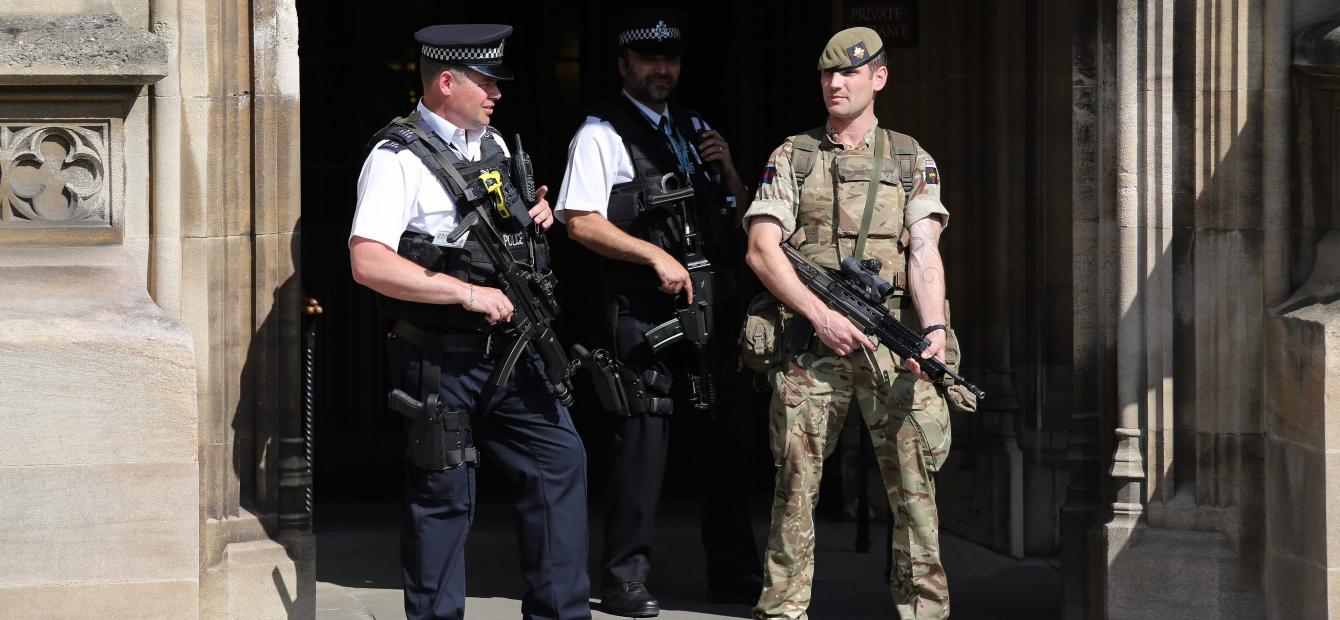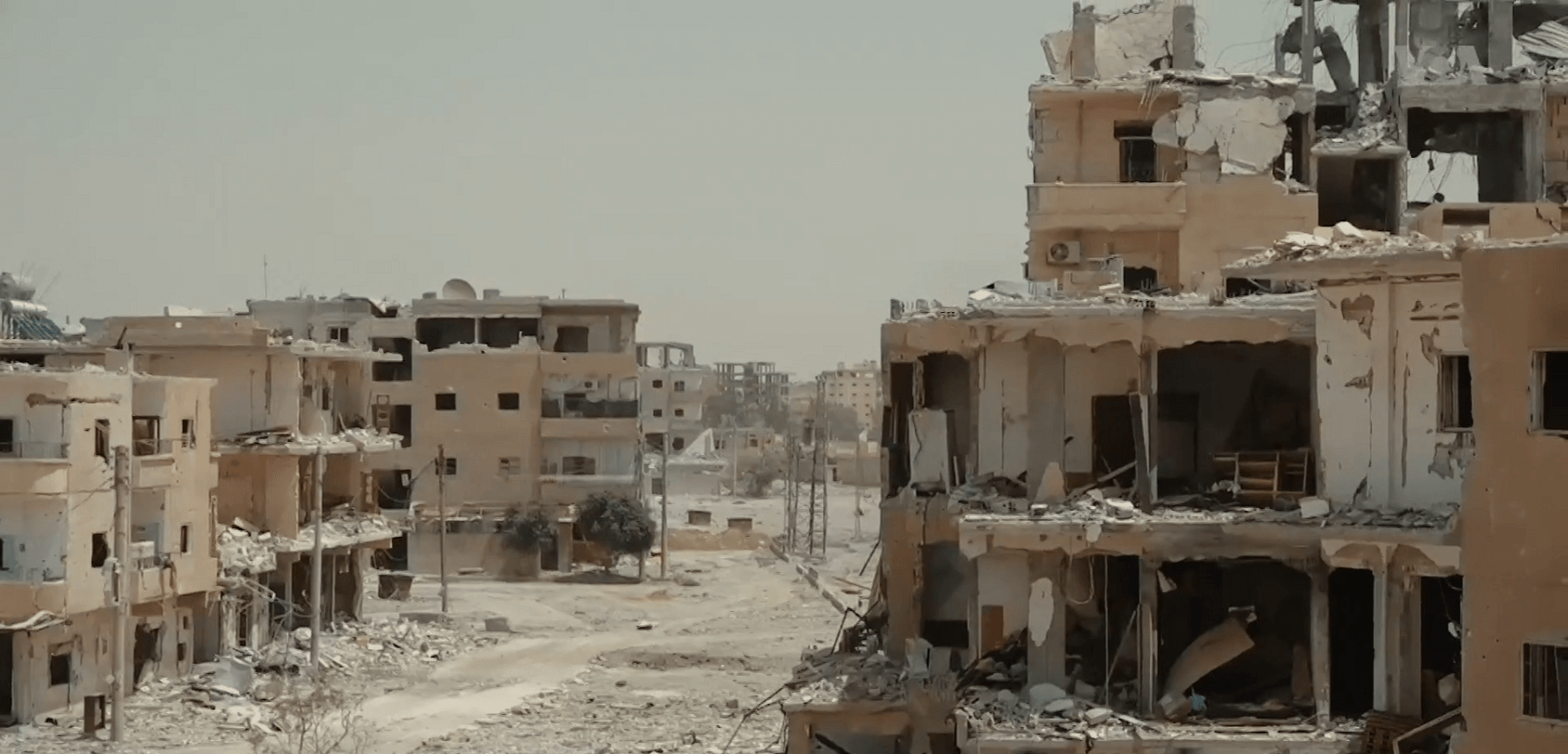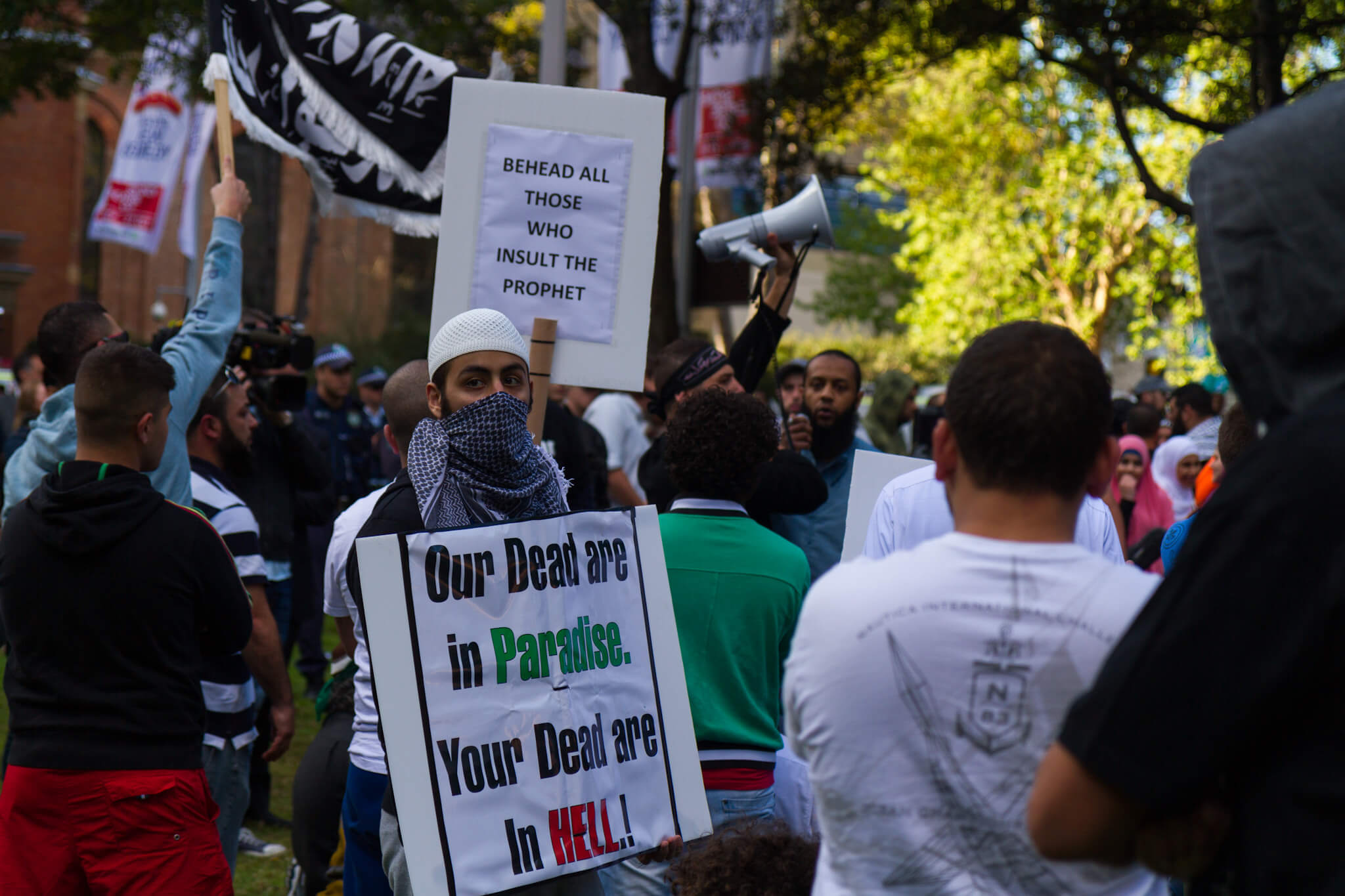
Anticipating the Post-ISIS Landscape in Europe
New York was once again the scene of a terrorist attack. On Halloween, 31 October 2017, the 29-year old Uzbek-born Sayfullo Saipov plowed a truck down a crowded bike path in Lower Manhattan. Eight people were killed and eleven injured. A handwritten message near the truck indicated Siapov’s allegiance to the Islamic State: “It will endure forever,” the note said. But will it? Will ISIS survive the collapse of its state project in the Levant?
It often looks as if it’s prudent – or realistic – to favour gloomy predictions so as not to be labelled naïve. Dire predictions indeed predominate in the assessments of what might follow after the territorial defeat of ISIS in Syria and Iraq. Ominous scenarios were advanced as soon as it became obvious that the military campaign against ISIS was gaining ground.
Too pessimistic predictions
Most worst-case predictions did not materialise, however. Throughout 2016, there was a good deal of speculation about whether foreign fighters would return en masse to their home countries as a result of the increasing misfortunes of ISIS on the battlefield. These veterans would then plot against their respective homelands, constitute sleeper cells, and groom a new generation of jihadi warriors. As far as Europe is concerned, this outrush did not take place. It now seems likely that most remaining European fighters have decided to fight to the death in the last ISIS bastions.
A second likely outcome often suggested, is the increase in homegrown plots in Europe as a direct consequence of ISIS’ loss of territory. Some even suggested this could be a deliberate ISIS strategy to upheld the illusion it is still on the offensive, thus bolstering its recruitment efforts. For some time, this gloomy scenario looked credible as a result of the string of attacks in Europe during 2015 and 2016. But in June 2017, Europol reported that the number of failed, foiled and completed attacks in the European Union had declined in 2016. This was a continuation of a downward trend that started in 2014. The number of fatalities also dropped in 2016 in comparison to 2015, albeit only slightly.
With hindsight, other scenarios too now appear overly pessimistic. ISIS has not been able to relocate its seat of power to some other location in the world. It was also claimed the ‘virtual caliphate’ would sustain the ISIS dynamics. It is too early to dismiss or validate this scenario, since the effects of this massive propaganda effort will play out – or not – over the long term. But still, one should keep in mind that every narrative needs a context to resonate and hubs to mobilise.
Another gloomy scenario according to which ISIS was going to exploit the irregular migrant flow to Europe, did not happen either. There is indeed no firm evidence that terrorist travellers systematically used the flow of refugees to enter Europe unnoticed.
ISIS’ attraction at first…..
Since its emergence in the late 1980s, jihadism has waxed and waned. We have long failed to comprehend its successive sub-waves. ISIS is, for now, the last jihadi sub-wave. It re-energised jihadism thanks to its unique selling proposition among contemporary jihadi groups: a vast proto-state called ‘caliphate’. This allowed ISIS to outbid al-Qaeda and to attract tens of thousands of volunteers with widely different motivations from vastly different locations around the world. Through its control over a large territory ISIS was in a position to offer them a catalogue of boundless opportunities with a promise of instant satisfaction for anyone seeking to join them, physically or virtually.
The pull of ISIS extended beyond those searching for a fight
To members of street gangs the catalogue offered status, brotherhood, thrill, adventure, respect, and an outlet for their anger to an extent they could only dream of on the streets of their home countries. ISIS offered them a once-in-a-lifetime opportunity to join a super gang, heroism, and martyrdom if they wanted. It provided them with power over others, hope of revenge, and even a license for viciousness in the name of a higher goal.
But the pull of ISIS extended beyond those searching for a fight. It offered a new life to those in search of belonging and meaning in life, adolescents and 20- and 30-year-olds alike. ISIS hinted at a new beginning, empowerment, pride, a future, prospects, warm camaraderie, and a feeling of finally being accepted the way they wanted to be. ISIS also offered material wealth: a salary and a villa with a pool. And a spouse.

The self-declared state was not only a warrior nation. It also needed ‘normal’ people, not bent on violence: doctors and nurses, officials and engineers, mothers and teachers. ISIS went to great lengths to project a new utopia of peace and harmony with simple and straightforward rules, a recovered righteous caliphate to which Muslims worldwide could migrate – a new hijra, alluring to all Muslims who felt like ghuraba, strangers in their own country.
……now its fascination is fading……
It is reasonable to anticipate that the ISIS brand will lose its appeal as a result of the loss of its unique asset, since this constituted a critical part of ISIS’ force of attraction. As time progresses, and the heroic memories of ISIS’ caliphate vanish and the evidence of its brutality and terror lingers, fascination with Islamic State will wear down. The failure of its state project, the dissolution of its aura of invincibility, and the indiscriminate nature of ISIS-style attacks will drain the fascination it originally induced. The news flow about the organisation will ebb. For terrorism to attract ever-new generations of volunteers, it has to inspire confidence that its stands on the winning side of history and it has to be credible as to the promises it suggests.
This fading of the fascination with ISIS should come as no surprise. It corresponds to the waxing and waning dynamics of jihadism itself, but also to the lifecycle dynamics that characterised earlier transnational terrorist campaigns: they emerge, reach their peak and then start to decline.
The same mechanisms create delinquents and jihadis alike
The jihadi mobilisation under the ISIS flag has been more significant than previous jihadi waves. This has created a dynamic on its own. It is thus reasonable and, unfortunately, realistic to assume that for some time to come attacks ‘in the name of ISIS’ will continue to be plotted by all kinds of people: returnees seeking revenge, lone actors and small cells, the desperate and the 15-minutes-of-fame seekers, delinquents in need of justification, and even the mentally unstable wrapping their psychological problems in a ISIS-ish narrative. The vehicular attacks on Barcelona’s Ramblas and in Cambrils in mid-August 2017, and the yet again terrorist incident in the London Underground in mid-September are a sober reminder that ISIS continues to resonate in Europe for the time being. This illustrates the need for a continued investment in police and intelligence services, since they constitute the last barrier to terrorist attacks.
….but the preconditions that permitted ISIS’ success still in place
Even gloomier is the assessment that the conducive environments, or preconditions, that permitted ISIS’ success – and the constant re-invention of jihadism – in widely different locations around the world, including Europe, are still very much in place. Jihadism is the revolutionary paradigm of our age. As no other ideology it speaks to the disenfranchised and the estranged.
In Europe, ISIS has been the object of all kinds of fantasies for all kinds of people, from thrill- and revenge-seekers to the mentally unstable to those seeking meaning and belonging, all of whom want to be part of ISIS because it offers them a rare, instant opportunity to go from zero to hero. Some had a previous life of petty crime, drug trafficking, and other forms of juvenile delinquency. The same mechanisms create delinquents and jihadis alike. Others were youngsters with no previous sign of deviant behaviour.
In social media, wiretaps, or interviews, however, they often mentioned earlier personal difficulties (of various kinds), that left them feeling stifled and discontented. One gets the impression of solitary adolescents, frequently estranged from family and friends, in search of belonging. Often these stories point to a desire to leave this dunya behind, to be ‘someone’, to be accepted, to do something ‘useful’. They want to look up to heroes – or to be one themselves. They long for an alternative lifestyle. And they want to believe in ‘something’.
Lack of prospects
The common denominator here is a lack of prospects, both real and perceived. This does not simply equal socioeconomic deprivation. For some it amounts to quintessential teenage angst, making them receptive to a groomer’s attention. For others, however, it results from a life of broken dreams and harsh daily experiences of being considered second-class citizens in their own country.
Lack of prospects is clearly not simply a matter of failing to secure a job or facing discrimination – although one should never underestimate the impact of this on the group of Europeans that left for the Levant. It’s about feeling trapped. ‘Un sentiment d’abandon’ (‘a feeling of abandonment’) was the prevailing sentiment Latifa Ibn Ziaten, the mother of one of the soldiers killed by Mohammed Merah in 2012, sensed when speaking at schools in the French cités. A recent innovative social mapping of Molenbeek, a municipality in the northwest of Brussels that saw some 50 (mostly young) inhabitants leave for Syria, contained a similar observation: “nobody cared about [the host of problems in] Molenbeek – therefore it is a good place for radicalisation to develop.”
Between 2005 and 2012, a chance was missed in Europe to make the environment less conducive to the jihadi narrative
This conducive environment produced the no-future subculture that drove a small number of mostly young individuals towards the Levant. This subculture was already the key driver behind the journey of hundreds of Europeans to Iraq after 2003. ISIS plugged into the same conducive environment made up by a host of personal motivations and mobilised again the same subculture. But now volunteers were even younger than in the previous sub-waves, and their decision to leave for a jihadi theatre was even less faith-based. Personal motivations were still more diverse. And, above all, they came in much greater numbers.

A new window of opportunity?
The good news is, that the waning of ISIS offers some respite and a new window of opportunity to confront the preconditions that have allowed jihadism to thrive in the past. But the existence of a window of opportunity does not imply that chances will be automatically seized or that the outcome is a foregone conclusion. The second half of the 2000s offers a sober reminder that sometimes chances are wasted.
Between 2005 and 2012, a chance was missed in Europe to make the environment less conducive to the jihadi narrative and to connect with mainstream opinion within diasporic and Muslim communities. But the perseverance of structural obstacles detrimental to individuals and communities with non-European roots and feverish debates on migration and Islam precluded any meeting of minds. Polarisation went unchecked. This in turn reinforced the feeling among the offspring of migrants from Muslim-majority countries of being considered second-class citizens, if not unwelcome aliens.
The culture war over Islamic symbols effectively reinforced the core jihadi message that there was no place for Muslims in the West. A new generation of Islamic missionary organisations, mosques and teachers imparting a radical, ultra-orthodox message emerged, with a highly activist aspect. But violence-prone fringe activist groups also found the environment appropriate for grooming a new jihadi generation. A number of them were manipulated by the British leader of Sharia4UK, Anjem Choudary, into a deliberate strategy: initially acting through provocative missionary actions, but then increasingly becoming more violence-prone hubs waiting for an opportunity. Syria was to be the first opportunity.
In many respects, today’s outlook in Europe resembles the circumstances which existed in the second half of the 2000s. The main ominous signs today are once more the perseverance of a conducive environment, but also the volume of the post-ISIS hubs, and the turmoil in Europe’s southern neighbourhood. The positive developments, on the other hand, are at least as significant. Firstly, jihadism remains the fringe phenomenon it has always been in Europe. Secondly, it is reasonable to assume the ISIS brand will wane in turn, as did the earlier sub-waves of jihadi terrorism. Finally, not only authorities but also civil society appear more eager than before to address (parts of) the conducive environment for jihadism.
If we collectively fail to seize this moment offered by the waning of the fascination with ISIS, at some point in the future the re-emergence of a fresh jihadi wave cannot be excluded, if and when a new opportunity for jihadi mobilization arises.
This article is based on a recently published study titled “Anticipating the post-Daesh landscape” (Egmont Paper 97, October 2017).





0 Comments
Add new comment